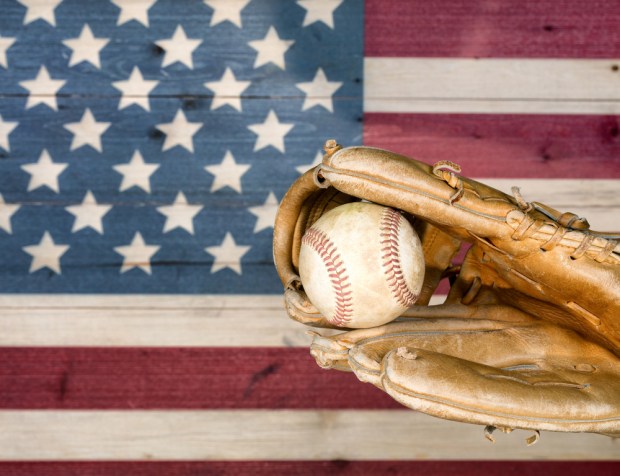FIS And The MiLB Play Ball For Their Second Year

Warm weather means a variety of things in the U.S. – beach trips, outdoor cooking, waterparks and, of course, baseball. In 30 major league parks and 160 minor league stadiums filling out American cities of all shapes and sizes, hundreds of baseball games will unfold this summer, in front of millions of fans who will come out to root (root, root) for the home teams.
Or just to boo the Yankees (Boston-based baseball fans, mostly).
Yogi Berra, baseball’s undeniably greatest quote factory, noted the following of his life in the game:
“If I didn’t make it in baseball, I won’t have made it workin’. I didn’t like to work.”
Lucky for all of us, Berra made it in baseball – though in this case, as in many others, he may have been a bit factually off the mark. Baseball is a game, a beloved game adored by a nation whose citizens have been going to the park in one capacity or other since at least 1791.
But it can also be very hard work, as noted FIS SVP David Johnson in an interview with PYMNTS – though admittedly, some of the most fun hard work to be had. FIS is taking the field, so to speak, for its second year of collaboration with the MiLB in efforts to bring the minors into the digital age. The two entities have also recently announced they will be collaborating on merchant, back office and loyalty solutions for the minors through 2022.
The focus for the club owners, Johnson noted, is simple: They want to build the best possible park experience for sports fans, so those fans will want to come more often and spend more money. Their early conversations were about how they could deliver on that, and how FIS could take redundant payment tasks off their plates.
“Every moment they are focused on some redundant task around money, they are not improving their park experience,” Johnson noted.
Which means in these early days, FIS and their collaborators at the MiLB have three main priorities. One is making the merchant payments experiences smoother, so that customers at the concession stand can swipe their cards or tap their phones without issue at any stadium. Next, to free up the back-office staff from processes that are reliant on cash, checks and receipts written on napkins. And finally, to find new ways to plug the unique loyalty of MiLB fans into a digital loyalty program.
The Baseball Back-Office Blues
While phasing out in many parts of corporate life, checks and cash play a big role in the minors. Employees of the parks, Johnson said, are generally paid by cash, despite the fact that the vast majority are seasonal workers who pick up about 15 hours a week working the game.
“As a payment person, I almost fell out of my seat when they explained that they were cutting paper checks for individuals who then had to come in person to pick them up between 10 a.m. and 2 p.m. on a Saturday. A lot of those workers then have to go find a check casher. That’s just a horrible experience.”
And, he noted, it’s not the only one. GMs, when it comes time to run out and purchase supplies, either spend a lot of time doing a relay race with the club’s credit card, handing it off to various people, or they hand out cash. Or employees buy at their own expense and then submit “receipts” for reimbursement. “They have people showing up with chicken scratches on the back of a receipt of some kind that their back office then has to reconcile.”
And then, Johnson said, there are the “duffel bags full of cash.” Though in most contexts, a bag full of bills is a sure sign that a crime is about to happen or has just happened, in the case of minor league baseball, it is a sure sign that the team is about to go on the road for two weeks. Players and staff are given per diem payments – and since issuing checks is obviously not practical in most cases, per diem funds are distributed in cash on the road.
All of these things, Johnson noted, have security issues – and are terribly inefficient.
All of these problems can be solved with a prepaid card tied to a more flexible backend solution that can do the heavy lifting in these situations. Employees can be issued cards and have funds directly placed on them. Those funds might be payments for temporary ballpark workers who can be paid for their work immediately after their shift is completed, instead of once a week after a long journey. Or they might be per diem for players, where $25 can just be pushed to the card.
Cards also allow GMs to give their workers access to specific funds in real time as needed, rather than working through reimbursements. And, Johnson noted, the back-office platform is also designed to let employees scan in things like receipts directly, so that back-office staff can get out of the business of collecting and categorizing pieces of paper.
“Clearly this is time wasted, where they could be doing something else.”
And that something else, Johnson said, is building a better and stickier experience in their parks.
Pitching to Loyalty
Enhanced loyalty offerings will not be in the FIS MiLB line-up in 2018: The plan, Johnson noted, is to launch during next season. This year is dedicated to building.
That’s because constructing the right program for minor league ball is challenging – it’s not as simple as letting users “build points so they can buy a TV or an airplane ticket, because users aren’t going to generate that many points during a baseball season.”
Instead, Johnson said, the MiLB and FIS are focusing on the operating concept of “it’s fun to be a fan,” and channeling their energies into rewarding those who come to games – and come to games often – with the ability to access an expanded menu of experiences while at the park.
“We are conceiving of this as a sweepstakes program,” Johnson noted, “so customers can take the points they have earned by going to games and then bid in auctions for specialty items on offer by the park.”
The specific offers will vary by location. They might include signed balls, or the ability to watch a game from the dugout for two innings, or a chance to run the bases during the seventh inning stretch.
Coming up with the perks, Johnson noted, is the park’s contribution to loyalty. But after making those selections, the rest of the program – keeping track of points and managing the sweepstakes – is managed through the First Pitch app provided by the MiLB.
This means parks can customize their offerings while enjoying the benefits of a loyalty program without having to take on the technically complex logistics of running one.
What’s Next
Loyalty as they are working on it now, Johnson noted, is just the first phase – but there is more to come.
Minor league parks often have something of a unique relationship with their communities.
“These parks are often in smaller cities, and they have great communities around them that have a great connection to the team,” Johnson pointed out. “We are trying to look at that and figure out how we can make a loyalty coalition model work for those small geographic areas.”
Because, he noted, parks and local businesses have reason to want to reciprocally boost each other. While a customer is in the app, there is a strong opportunity for a local restaurant to push them an offer to redeem after the game. There is also a chance for the local business to help push consumers to the field on game night.
“Why not tie all of that together inside the same mobile app?” Johnson asked.
That will take time to develop, he pointed out, as coalition models are hard to do. Just ask Amex.
But, he noted, baseball – and commerce communities that spring up regionally around game night – is a unique setting, and one where cooperation is uniquely rewarded.
That loyalty solution, writ large, may still be a few years away, as the parks are building digital capacity and developing the sweepstakes model. But more likely than not, Johnson said, that is ultimately the minor league loyalty model that will take the field.
